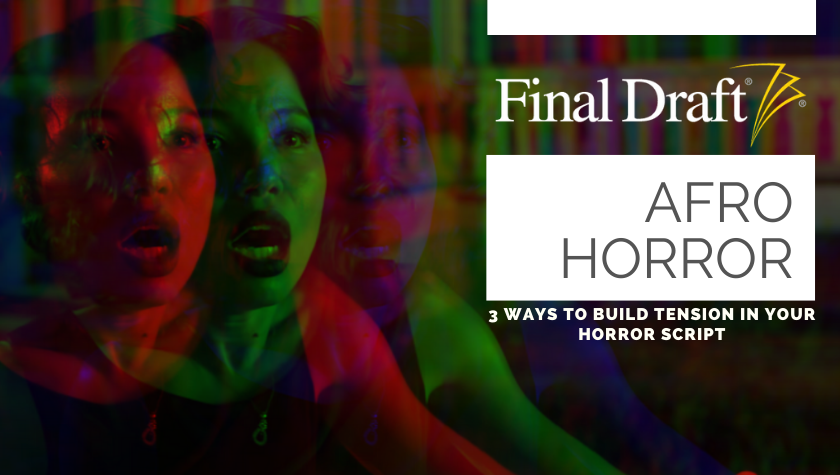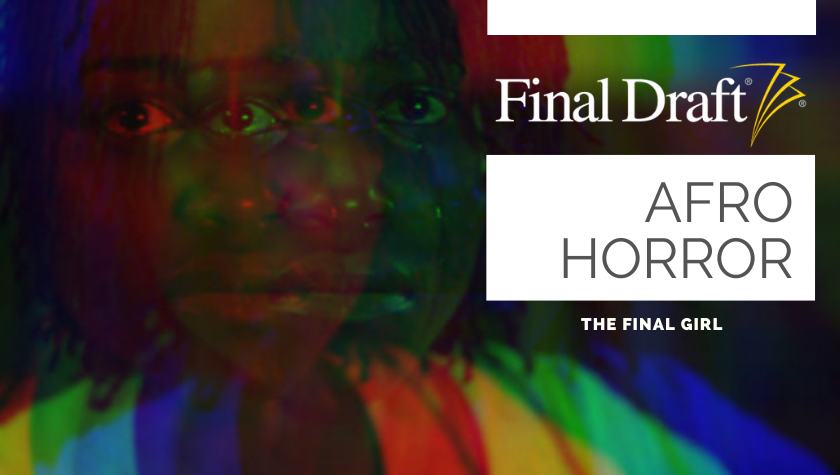Afro Horror: Internal and External Wants in Horror
April 9, 2021
If you’re reading this, it’s either because you know me and you're supportive (hi, Mom!) or you want to learn about internal and external wants in your screenplay. Either one is perfectly fine with me! Today I am going to try to break down complicated A, B and C stories within the horror genre. First, as always, let me start by saying that this is purely personal advice and that there are many, many ways to execute internal and external wants/needs in a script. I am merely offering you my approach, which you may take or leave at your own leisure.
Without further ado, here are three things to remember about A, B and C stories in your horror script.
External want
Typically, this is your A story. It is a tangible goal that your character wants or needs to accomplish by the end of your script. In my personal opinion, it is vital that this want is something that can be tangibly executed by your main character. However, that does not necessarily mean it has to be something physically tangible, but it has to be a goal that is able to be obtained in some sort of value. For example, in The Exorcist the external want for the priest is to exorcise the demon from Regan. A demon isn’t necessarily something the priest can physically hold, but the overarching goal of cleansing the house is achievable for both him and the audience. Another example of an external want would actually be from Deadly Dispatch, a film I wrote that premiered on TV One in 2019. In that film, the lead character is determined to prove a sinister friend is the culprit in her best friend's murder. Her external want is to bring the murderer to justice, which ultimately will also fulfill her internal want. This is a good time to segue to...
Internal want
For me, this is the main character's B story. This is something they are working on internally that the audience cannot physically see, but it can be tracked during their A story as chinks in their armor. Going back to Deadly Dispatch, my lead character’s external want is to find her best friend's killer, but her internal want is to find closure about losing her friend. Throughout the story she struggles between debilitating grief and motivating hate. Both almost consume her but — spoiler alert — she prevails. Another example of an internal want is in one of my favorite performances from Vera Farmiga in the cult classic Orphan. In the movie, Vera’s character is determined to out her newly adopted daughter as something other than what she is portraying while also desperately trying to stay sober. Her consistent battle with alcoholism only worsens as her opponent continues to get the best of her. It really raises the stakes for the A story, which ultimately, for me, is the true goal of a B story.
The C story
So now that you have the basic understanding of an A and B story in horror, where does the C story story fit? Well, in television a five-act drama C story — where this is typically used — will follow a side character and their need/want. If you’re truly savvy, as Shonda Rhimes has stated on MasterClass, then you will "find a way to link the C story back to the A story." I'll give you an example from a Shondaland production: In Grey’s Anatomy, the A story is typically the medical case the doctors are trying to solve. The B story is the personal relationship we’re focusing on in the hospital and the C story is a spin-off of another personal story in the hospital that connects back to the medical mystery of the week. In Deadly Dispatch, the C story was the killer’s accomplice, who was trying to bury evidence of his involvement in the crime. Whichever way you swing it, a C story just isn’t meant to fill pages. It may not be as vital as the A and B stories, but it should be written with the same care.
I know a lot of what you just read may be daunting and perhaps overwhelming, but as I mentioned, this is a version of A, B and C stories that I like to use in my scripts. There are a myriad of variations to explore with this writing device, so I would also advise looking up some of your favorite writers and seeing how they execute this on the page! For homework, try picking up a horror script, reading it, and seeing if you can identify the internal and external struggles of the protagonist. Practice makes perfect!
Written by: Sade' Sellers
Sade Sellers is a screenwriter and producer based in Burbank, California. Originally from Michigan’s capital, Lansing, Sade’ has been working in the entertainment industry since 2009. In 2017, Sade’ was a finalist for Tv One’s Screenwriting competition for her teleplay The Replacement. This achievement motivated the network to hire her as a writer for their upcoming movie of the week event, Deadly Dispatch, which premiered on the platform in the summer of 2019. Through that production process, Sade’ met casting director Leah Daniels-Butler who was in the midst of staffing her production company, 1oneninety5. Sade’ then rose to the role of Vice President of Content Acquisitions and Development and spent the next year learning the ecosystem of film and television development from pitching to production. Using that experience, and bound at home due to COVID-19, Sade’ made a return to her first love, screenwriting, utilizing her free time to write new content. www.sadesellers.com- Topics:
- Discussing TV & Film




